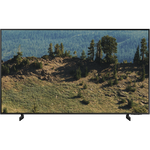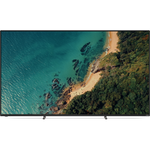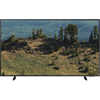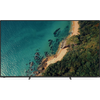A comparison of specs, key information, reviews, and best pricing from top retailers
Last updated 24 hours ago |
Report incorrect information
What we think

The PerfectRec TV team Learn more
Updated January 10, 2024· Prices updated 24 hours ago
The Samsung AU8000 is a lower midrange priced TV and is often significantly less expensive than the Vizio P-Series. It offers good value if you're watching TV in a bright room and need ample features for day-to-day use, such as news or cartoons. Consider the Vizio P-Series if you prioritize picture quality and gaming performance and don't mind the higher price. Give Feedback
this description is based on the product variant with some specs and product variant with some specs. At the time of writing, the variant with some specs cost some dollars and the variant with some specs cost some dollars.
Advantages of the Samsung AU8000 (LCD)
- Good for upscaling
Advantages of the Vizio P-Series (LCD)
- Very good for bright room
- Good for dark room
- Good for gaming
- Good for movies & TV
- Good for news, talk, & other TV
- Very good for cartoons & animation
- Very good reflections
Key differences
Picture Quality
6.6


7.9
6.71/10
CONTRAST
8.00/10
6.3/10
COLOR VOLUME SCORE
8.1/10
LED
PANEL TYPE
LED FALD
VA
PANEL SUB-TYPE
VA
The Vizio P-Series (LCD) has good picture quality, while the Samsung AU8000 (LCD) has only fair picture quality.
Movies & TV
5.9


7.7
6.71/10
CONTRAST
8.00/10
6.9/10
BLACK UNIFORMITY
7.0/10
7.5/10
UPSCALING
5.7/10
Yes
HDR10 SUPPORT
Yes
Yes
HDR10+ SUPPORT
Yes
No
DOLBY VISION SUPPORT
Yes
The Vizio P-Series (LCD) is good for movies & TV, while the Samsung AU8000 (LCD) is poor.
The Samsung AU8000 lacks local dimming and has poor gray uniformity which lowers the picture quality, especially in dark scenes common in movies and cinematic TV, whereas the Vizio P-Series offers excellent contrast, effective local dimming, and better black uniformity, providing a more immersive experience with deeper blacks and more consistent lighting.
Gaming
5.8


7.7
5.9/10
RESPONSE TIME SCORE
6.0/10
10.0/10
INPUT LAG SCORE
7.6/10
6.0/10
MOTION PROCESSING
5.3/10
0.0/100
GAMING LOCAL DIMMING
70.0/100
5.8/10
GAME HDR BRIGHTNESS SCORE
8.6/10
The Vizio P-Series (LCD) is good for gaming, while the Samsung AU8000 (LCD) is poor.
The Samsung AU8000 is considered poor for gaming primarily because of its response time, which affects how quickly the screen can display changes, making it less suitable for fast-paced games. Conversely, the Vizio P-Series offers a better gaming experience as it has a fair response time and good input lag performance, which means it is more responsive to gaming inputs and will be better for fast-action games.
Cartoons & Animation
6.9


8.3
6.1/10
COLOR GAMUT SCORE
8.3/10
6.3/10
COLOR VOLUME SCORE
8.1/10
7.1/10
SDR BRIGHTNESS SCORE
8.8/10
7.2/10
COLORS OUT OF THE BOX SCORE
7.2/10
6.8/10
GRAY UNIFORMITY
6.4/10
The Vizio P-Series (LCD) is very good for cartoons & animation, while the Samsung AU8000 (LCD) is only fair.
The Vizio P-Series is rated very good for watching cartoons and animation primarily because its color gamut provides a broad range of colors which are essential for vibrant animated content, while the Samsung AU8000 exhibits only fair performance in terms of color gamut, limiting the range of colors displayed. Additionally, the Vizio maintains better color volume, which helps in preserving color accuracy at different brightness levels, enhancing the overall viewing experience of animated scenes compared to the Samsung AU8000.
News, Talk, & Other TV
6.7


7.2
7.1/10
SDR BRIGHTNESS SCORE
8.8/10
7.5/10
UPSCALING
5.7/10
The Vizio P-Series (LCD) is good for news, talk, & other TV, while the Samsung AU8000 (LCD) is only fair.
The Vizio P-Series boasts very good SDR brightness, which helps maintain picture quality in bright rooms, and superior color accuracy, which will enhance the viewing experience for everyday content like news or talk shows, factors the Samsung AU8000 is noted to perform at a lower but still reasonable level.
Bright Room
6.3


8.9
5.5/10
VIEWING ANGLE
5.2/10
7.1/10
SDR BRIGHTNESS SCORE
8.8/10
5.7/10
HDR BRIGHTNESS SCORE
8.3/10
7.8/10
REFLECTIONS SCORE
8.6/10
The Vizio P-Series (LCD) is very good for bright room, while the Samsung AU8000 (LCD) is only fair.
The Vizio P-Series is better equipped for bright room viewing due to its higher brightness levels in both standard and high dynamic range content and superior handling of reflections, compared to the Samsung AU8000 which has lower brightness and a good but not as high reflection handling capability. Although the Samsung AU8000 has a good contrast and color performance, the Vizio P-Series outshines it with very good scores in both contrast and color volume, which contribute to its overall superior bright room performance.
Cost
$648


$998
$200
$400
$600
$800
$1,000
$1,200
$1,400
$1,600
The Samsung AU8000 (LCD) has a price of $648 and the Vizio P-Series (LCD) costs $998.

Let Us Help Find Your Perfect TV
Find your new TV
Key similarities
Sports
6.5


6.4
6.0/10
MOTION PROCESSING
5.3/10
60Hz
REFRESH RATE
120Hz
10.0/10
INPUT LAG SCORE
7.6/10
7.5/10
UPSCALING
5.7/10
7.1/10
SDR BRIGHTNESS SCORE
8.8/10
Yes
HLG SUPPORT
Yes
The Samsung AU8000 (LCD) and Vizio P-Series (LCD) are both only fair for sports.
The Samsung AU8000 has a shorter response time which is great for sports as it reduces motion blur, but it doesn't handle reflections as well and has narrower viewing angles compared to the Vizio P-Series. On the other hand, the Vizio P-Series, despite its slower response time which might introduce some motion blur, performs better in bright rooms due to its superior handling of reflections and also offers a wider viewing angle which is beneficial for watching sports with a group.
Give feedback
We’re constantly working to improve.
How the Samsung AU8000 (LCD) and the Vizio P-Series (LCD) compare to other TVs
Spec Comparison
| Samsung AU8000 (LCD) | Vizio P-Series (LCD) |
GENERAL | |||
|---|---|---|---|
| Price | |||
$648 | $998 | ||
Brand | |||
Brand | Samsung | Vizio | |
Release Date | |||
Release Date | March 4, 2021 | July 1, 2021 | |
Full name | |||
Full name | UN65AU8000 | P65Q9-J01 | |
Screen Size | |||
Screen Size | 65" | 65" | |
Screen Resolution | |||
Screen Resolution | 4K | 4K | |
TV FEATURES | |||
|---|---|---|---|
Operating System | |||
Operating System | Tizen | SmartCast | |
Sound Quality Score | |||
Sound Quality Score | 6/10 | 6.9/10 | |
NextGen Ready | |||
NextGen Ready | No | No | |
HDMI Ports | |||
HDMI Ports | 3 | 4 | |
Coax Ports | |||
Coax Ports | 1 | 1 | |
DISPLAY QUALITY SCORES | |||
|---|---|---|---|
Picture Quality Score | |||
Picture Quality Score | 6.6/10 | 7.9/10 | |
Bright Room Score | |||
Bright Room Score | 6.4/10 | 9/10 | |
Gaming Score | |||
Gaming Score | 5.8/10 | 7.8/10 | |
Movies & TV Score | |||
Movies & TV Score | 5.9/10 | 7.8/10 | |
Sports Score | |||
Sports Score | 6.5/10 | 6.4/10 | |
PHYSICAL | |||
|---|---|---|---|
Dimensions w/o Stand (H x W x D) | |||
Dimensions w/o Stand (H x W x D) | 32.7" x 57.1" x 1" | 32.9" x 57" x 3.4" | |
Dimensions with Stand (H x W) | |||
Dimensions with Stand (H x W) | 34.4" x 57.1" | 34.7" x 57" | |
Weight without Stand | |||
Weight without Stand | 46.1 lbs | 53.3 lbs | |
VESA Mount | |||
VESA Mount | 400 x 300 | 400 x 200 | |
DISPLAY | |||
|---|---|---|---|
Color Depth | |||
Color Depth | 10 bit | 10 bit | |
Black Frame Insertion | |||
Black Frame Insertion | Yes | Yes | |
Auto Low Latency Mode | |||
Auto Low Latency Mode | Yes | Yes | |
Contrast | |||
Contrast | 6.7/10 | 8/10 | |
Local Dimming | |||
Local Dimming | 2.5/10 | 6.5/10 | |
SOUND | |||
|---|---|---|---|
Speaker Setup | |||
Speaker Setup | 2.0 | 2.0 | |
Speaker Power | |||
Speaker Power | 20 W | 30 W | |
Dolby Atmos | |||
Dolby Atmos | Bypass only | Yes | |
DTS:X | |||
DTS:X | No | Up to DTS Digital Surround, Bypass only | |
Shopping
Samsung AU8000 (LCD)
See more
Dig into reviews and images
USA Today
Michael Desjardin | April 2023
"To put it directly: you’d never see a mid-range 4K TV hitting this black levels half a decade ago. AU8000 plays the part of a higher-end TV thanks to its sleek design. If you’re upgrading to a smart TV for the first time, the software is a great way to dip your toes in the streaming water."
Vizio P-Series (LCD)
Start shopping
Pricing last updated 24 hours ago |
See more
Dig into reviews and images
Tom's guide
Brian Westover | October 2021
"We were even more pleased to see that performance had improved across the board, with the display offering better color, brightness, and shorter lag times than the already excellent Roku model. Color accuracy was great right out of the box. The TCL 5-Series Google TV becomes a great option for demanding gamers."
Get a great deal on the Samsung AU8000 (LCD) or the Vizio P-Series (LCD)
Perfectrec constantly monitors the prices from 1 retailers and sends you a weekly update.
Only the products you care about. No spam.
About Samsung
Samsung, a South Korean electronics manufacturer, holds the title of being the largest global TV vendor in terms of units sold. They offer a diverse lineup of TV products that cater to various budget ranges. A notable achievement in recent years is the development of Quantum Dots, a technology that enhances color reproduction, resulting in richer and more vibrant hues. Samsung TVs are well-regarded for their high manufacturing quality and user-friendly software, making them an excellent choice for consumers seeking an intuitive viewing experience.
About Vizio
Vizio is an American company. While they initially gained recognition for offering budget-friendly TVs, they have successfully expanded their product lineup to include high-end options as well. They manufacture TVs primarily in Mexico, China, and Vietnam. Similar to many Korean TV brands, Vizio developed its own smart TV software called SmartCast. In the past, SmartCast was not the best smart TV software, but it has evolved so that it is now good for using your TV and connecting to streaming services.
Give feedback
We're constantly perfecting our model
TV guides you might be interested in
More comparisons for you
Compare Samsung AU8000 (LCD) vs. Hisense A6H (LCD)
VS
Compare Samsung AU8000 (LCD) vs. LG UP7000 (LCD)
VS
Compare Samsung AU8000 (LCD) vs. Sony X85K (LCD)
VS
Compare Vizio P-Series (LCD) vs. Sony X90J (LCD)
VS
Compare Vizio P-Series (LCD) vs. Samsung Q80B (LCD)
VS
Compare Vizio P-Series (LCD) vs. Sony X90K (LCD)
VS
FAQs
FAQs about TVs
Why trust us
This information was produced and vetted by the PerfectRec TVs team. We are a product research and recommendation organization that meticulously reviews and evaluates the latest TV information and makes it digestible for you.
By the numbers
385
TVs evaluated
33,110
TVs stats compiled
21
Proprietary TVs ratings developed
175,530
Recommendations made
26,330
Consumer hours saved
About the TV team
Joe Golden, Ph.D
CEO and TVs Editor
Joe is an entrepreneur and lifelong electronics enthusiast with a Ph.D in Economics from the University of Michigan.
Jason Lew
Staff Expert & Software Engineer
Jason is a staff expert and software engineer that has been making laptop recommendations for 7 years and moderates one of the largest laptop subreddits.
Chandradeep Chowdhury
Staff Expert & Software Engineer
Chandradeep is a staff expert and software engineer and expert in televisions and monitors. He’s been making monitor recommendations for ten years.
Jaime Roldán
TVs Expert
Jaime is a Colombia-based TV expert. He is an electronics engineer with 8 years of experience in the telecom sector and has been making TV recommendations for 12 years.







